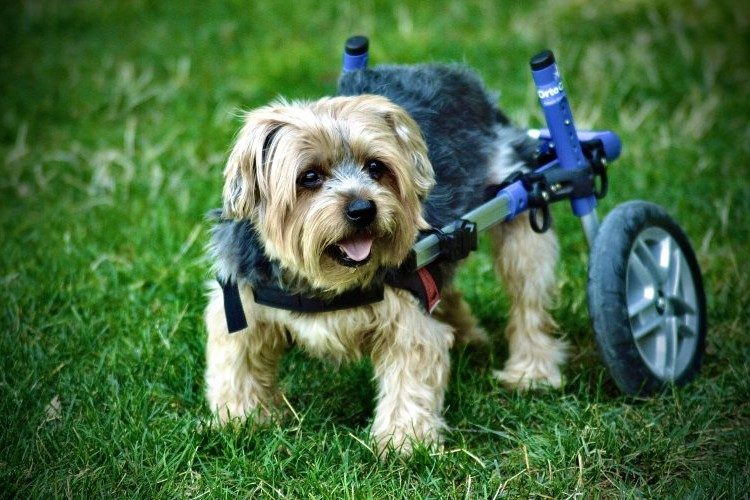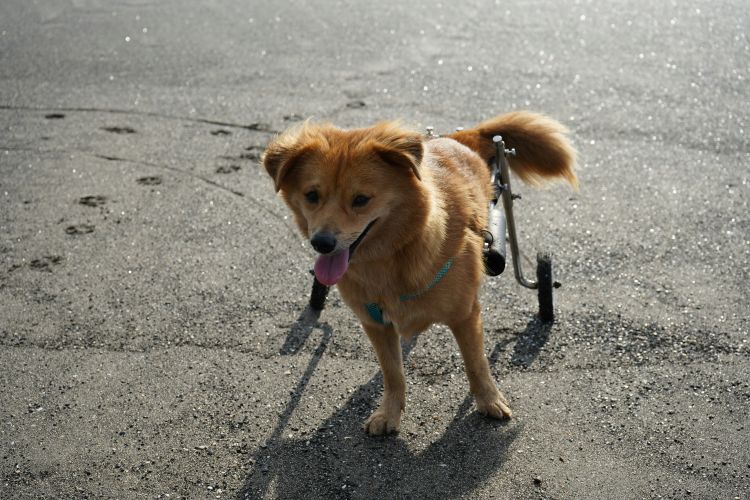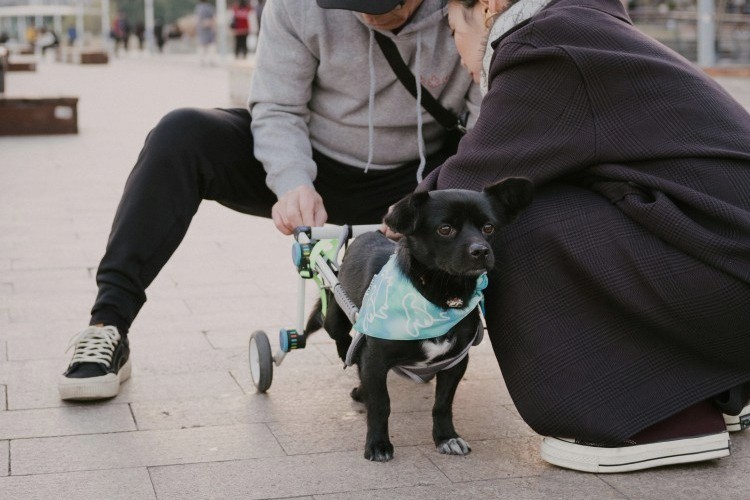Ready to help treat your pet to a healthy life?
Understanding Mobility Devices for Dogs
By : Kathleen Crampton | Published Oct 2, 2025

When you bring your pet home for the first time, you’re likely not thinking about the fact that they might need an assistive device at some point in their life. Nevertheless, many dogs go on to need exactly that due to illness, injury, or just general complications of old age. While the potential scenario can seem a bit scary, dog mobility devices are often an incredible solution for pups that just need a little extra help getting around. They can improve your dog’s quality of life as well as your own, decreasing stress and enabling both of you to continue doing activities you enjoy together.
Whether you’re considering a mobility device for your dog or simply want to learn more about these aids, get a better idea of when they’re used and for what conditions and current options available. As always, be sure to consult with your dog’s veterinarian about the best solution for your pup.
What exactly are pet mobility devices?
Pet mobility devices are assistive devices that help animals move around so that they can maintain their quality of life. Mobility devices are made for pets that have limited or difficult movement abilities — either temporarily or permanently — due to an accident, a medical condition, or issues stemming from old age.
There are mobility devices made for various types of animals, but they are used most commonly by cats and dogs. In this article, we’ll focus on dog mobility devices.
Does your dog need a mobility device?

To determine if your dog needs a mobility device, the first thing you should do is speak with your veterinarian. They will have an intimate understanding of your dog’s specific situation and can provide medical advice. For instance, if your pup has lost some mobility in one of their legs due to an injury, your vet may weigh whether only rehabilitation is needed to strengthen the leg or if an assistive device could be helpful in tandem with rehab.
That said, there are some common reasons for dogs needing certain devices to help them move around:
- Degenerative joint diseases
- Age-related loss of mobility
- Post-injury or post-surgery healing, as a way to limit movement
- Hereditary conditions, like hip dysplasia
- Paralysis
- Obesity
- Missing limbs
It’s normal for pet parents of dogs with sudden or ongoing limited mobility to be concerned about their pup’s quality of life. You should feel comfortable speaking with your veterinarian about solutions to your dog’s mobility issues.
6 common types of canine mobility devices

The exact type of device varies depending on your dog’s mobility needs, their size, and your vet’s recommendation. However, it doesn’t hurt to become familiar with the most common types of mobility devices for dogs (these are listed in no particular order):
1. Wheelchairs
The first known wheelchair for pets was created by Dr. Lincoln Parkes in 1961. Thanks to Parkes, dogs with limited mobility have been moving and grooving ever since, able to play and explore from the safety of a wheelchair.
Dog wheelchairs, also called carts, come in various shapes and sizes and are made for different purposes. There are two-wheeled carts with either rear-leg or front-leg support as well as four-wheeled carts designed for pups with conditions like spinal trauma, severe arthritis, or paralysis in all four legs.
Beyond shape and size, dog wheelchairs can also differ in what they’re made of (like aluminum for a lightweight feel) and in types of tires (like foam or air-filled). Additionally, some tires may be one-directional, while others can swivel. With so many options, choosing a wheelchair for your pup isn’t easy, but your veterinarian can help you determine the best option.
2. Slings and harnesses
Slings and harnesses are other types of mobility devices for dogs, helping pet parents lift up their dog who may have trouble moving. These mobility aids can be beneficial for all types of doggy activities but especially those involving moving up or down, like walking up or down hill, stepping up onto a curb or a stair, or hoisting your dog into the car.
There are rear harnesses that raise the back legs, front harnesses for lifting the front legs, and full-body sling harnesses for picking up all four legs. Handles are placed in a convenient location to make lifting movements as easy as possible for dog parents.
3. Orthotics
Leg braces and splints are orthotics that can be made for dogs. Similar to how you may wear a brace if you have a wrist injury, dogs can wear braces and splints to support their limbs. These devices protect pups as they move, typically providing three areas of support:
- Prevent injury (such as with knuckling)
- Restrict range of motion (such as during rehabilitation after an injury)
- Treat chronic joint issues
4. Prosthetics
Yes, dogs can have prosthetic devices too! Like human prosthetics, prosthetics for dogs can make an incredible difference in a canine’s ability to live an active and fulfilling life after an amputation. There are full-leg and partial-leg prosthetics that are either prefabricated or custom-made to fit your dog’s body exactly.
The future of canine prosthetics will likely involve technological advancements, such as osseointegration (an implanted prosthetic rather than an external one), enhanced 3D designs, and more expanded research in the field.
5. Ramps and stairs
Pet mobility devices aren’t just those that are fitted to your furry friend. If your dog has difficulty leaping up or jumping down, a ramp or set of stairs may be a good option.
For example, to protect their joints from the effects of jumping, some dogs might need a ramp to walk up into and down from the car. Meanwhile, some pint-sized pups may benefit from dog stairs so that they can easily join their pet parents on the couch or in bed.
6. Grippy boots or toe grips
Grippy boots and socks as well as toe grips can be helpful for pups that tend to lose their footing on slippery surfaces or dogs that are getting on in years and might not be the most sure-pawed anymore. Grippy boots and socks cover the entire paw, while toe grips are only applied to your dog’s toenails.
Having more traction can not only help your canine buddy move around more easily and confidently, but it can also prevent slips and falls.
Does dog insurance cover mobility devices?
Just like humans, our furry companions can experience illnesses, injuries, and unexpected medical conditions. That’s why Trupanion pet insurance covers mobility devices for eligible conditions, including orthotics, prosthetics, and carts (wheelchairs). If the mobility device is medically necessary and approved by your veterinarian, it can be covered under your dog insurance policy.
